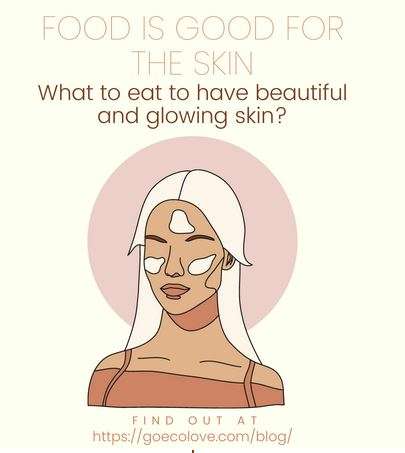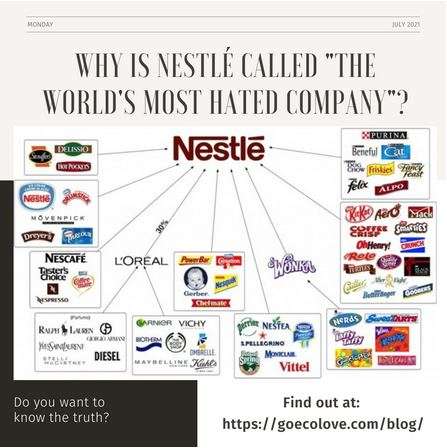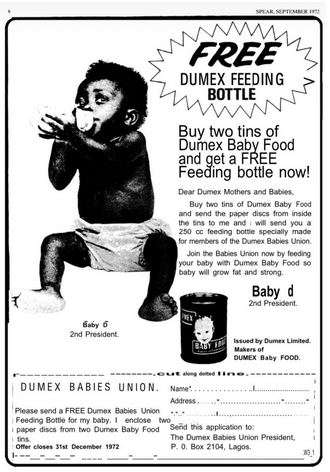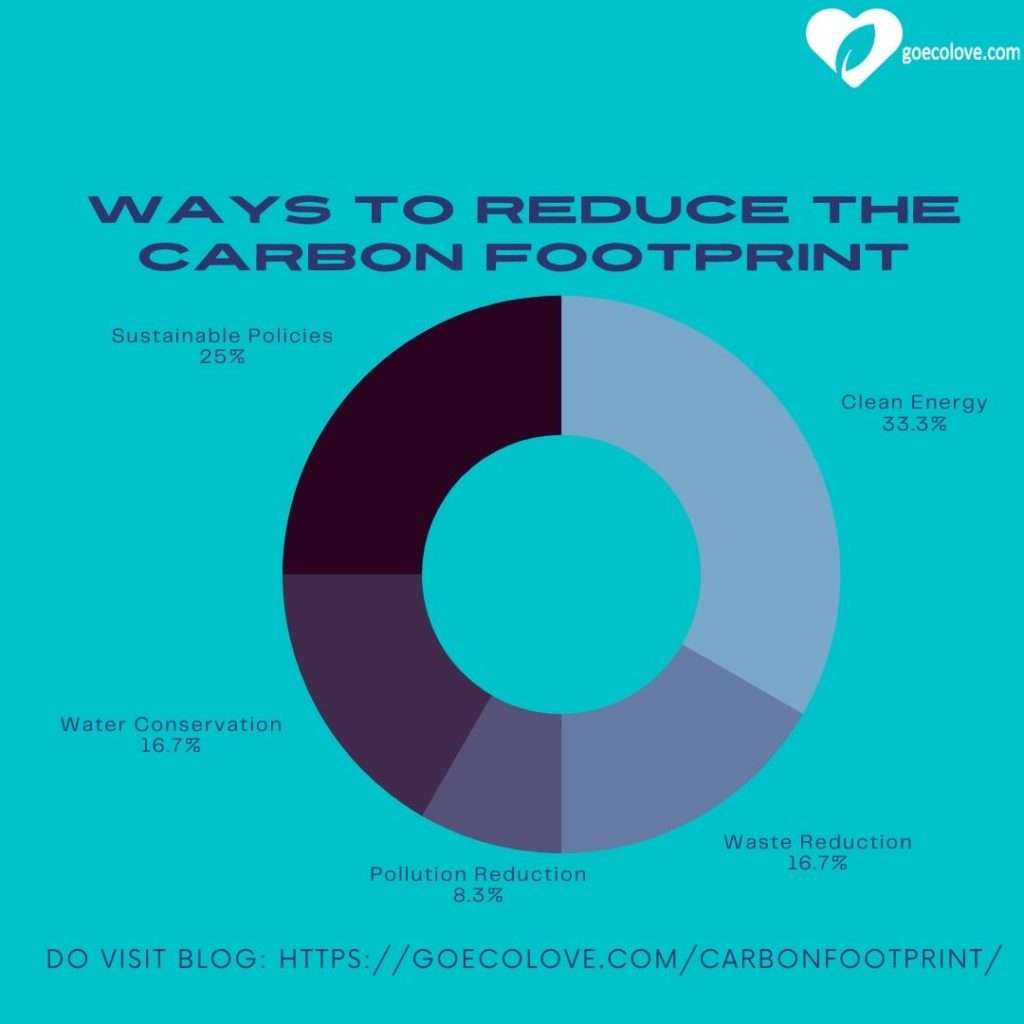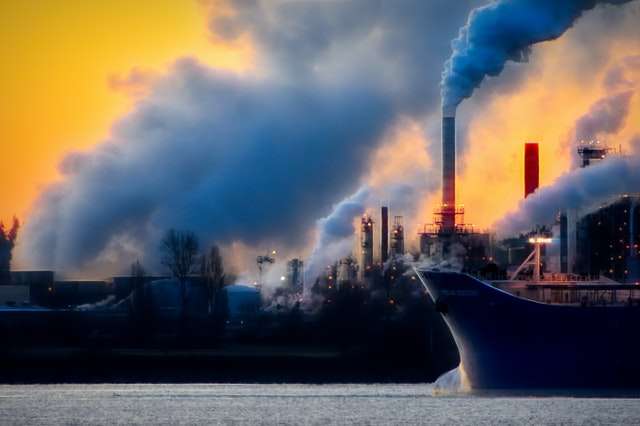Recently, we covered the most polluting brand Coca-Cola Company, this time – we will focus on Nestlé. Nestlé is the largest global food company, not only in terms of revenue but also in many other metrics. In 2020, Nestlé was ranked 84th on the Fortune Global list and 41st on the Forbes Global list of the largest listed companies in 2020.
They produce baby food, confectionery, coffee, tea, pet food, snacks, ice cream and much more. Additionally, the company owns shares in several cosmetics companies. Nestlé has 447 factories, operates in 189 countries, and generates annual revenue of $96.8 billion.
However, why is Nestlé called “the world’s most hated company”?
Let’s start with West Africa, where the company exploits children (who are between 12 and 15 years old) in cocoa production. In 2019, Nestlé announced that they cannot guarantee that their chocolate products are free of child labour because they can only trace 49% of their cocoa sources.
Moreover, the Washington Post noted that Nestlé’s 2001 commitment to eliminate such practices was not achieved in the allotted time (i.e., by 2005), and at this rate of change, there is no chance of a successful outcome in 2020. As if that was not enough, children working in production are trafficked to Côte d’Ivoire, forced into slavery, and often beaten on the plantation (according to a 2005 lawsuit filed against Nestlé on behalf of three Malian children).
In 2010, a US District Court tried to dismiss the lawsuit, saying that corporations cannot be held liable for these violations. The Seattle Times writes about “The six men who sued claimed that those companies aided and abetted child slavery because they “knew or should have known” that the farms were using enslaved children.
While neither company owns or operates farms in the Ivory Coast, they had bought cocoa from them, and also provided the farms with technical and financial resources in exchange for exclusive rights to their crops”.
In addition, a September 2017 investigation by Mighty Earth found that a large amount of cocoa produced by Nestlé and other large companies was illegally grown in national parks and other protected areas. Today, less than 4% of the Ivory Coast remains densely forested. Deforestation has left only a few small groups of chimpanzees, and the elephant population has declined from several hundred thousand to around 200-400.
How does Nestlé operate in other countries?
In 2002, Nestlé demanded that Ethiopia pay a $6 million debt to the company at a time when Ethiopia was suffering from famine (through a three-year lack of rainfall and a collapse in coffee prices, on which a quarter of the population subsists). The government offered a settlement, but Nestlé did not accept it. Let me remind you that Ethiopia has the lowest per capita income in the world, and the average person lives on $100 a year. Over 1/10 of children die before their first birthday.
The demands were cancelled after 8500 people sent e-mails to the company and the matter gained publicity. They said that after all, Nestlé prides itself on helping Africa, so they could donate this budget to fighting hunger in Ethiopia. Eventually, in 2003, the company accepted $1.5 million and donated it to charities.
Powdered infant milk? From this story, my dislike of Nestlé and delving into the actions of big companies started. The boycott directed at Nestlé began in 1977 when the company argued that infant milk powder was healthier than mother’s milk, and they paid doctors to recommend it. They targeted their actions and marketing primarily to developing countries.
Nestlé has introduced their products into the developing world and convinced doctors that they were right. Additionally, the company held meetings with local people explaining that modified milk was better. However, they did not translate the labels into the local languages. And what was the result? Women mixed the milk with polluted water, which led to illnesses among sensitive babies, and eventually death. Mothers lacked education about the sanitation methods needed to prepare the bottles.
Furthermore, UNICEF estimates that a baby fed on formula, living in unsanitary and unhealthy conditions, is 6 to 25 times more likely to suffer from diarrhoea and four times more likely to suffer from pneumonia than a breast-fed baby. And Nestlé? It prided itself on helping in Africa! How Nestlé spread formula milk? Women began to receive free formula in maternity wards (such a benefit from Nestlé). That often resulted in the mother losing the ability to produce her own milk and having to buy modified milk when she left the hospital.
Unfortunately, the cost of this milk is high. Therefore, poor mixtures are  usually prepared, which are unable to nourish babies properly.
usually prepared, which are unable to nourish babies properly.
These are some of the facts that discouraged me from Nestlé practices. Our population needs to understand the impact such large companies have on our environment, and actions need to be taken to reduce this.
What actions can we take to at least prevent this?
- We all have lots of friends and family, if you see this post, please share it and show what practices Nestle uses!
- Buying local produce whenever possible helps reduce food transportation and supports regional growers. A farmer’s market is a great place to buy inexpensive, local produce. You may find that many products are free of packaging, making it easier to buy food sustainably without increasing plastic consumption.
- Educate yourself! This tip can encourage eco-friendly shopping habits for those who cannot shop locally. Checking where products come from and how they were produced gives you a better idea of what kind of practices companies use. If you do not know the answers to these questions, you can find out with a bit of research.

